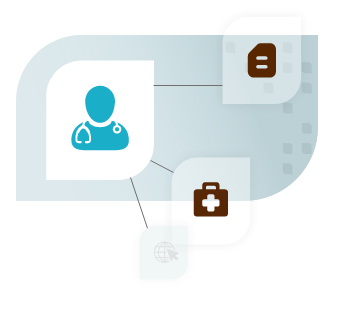For many people, it’s a scary time to be sick.
But with the right implementation, virtual care (or telehealth) offers a solution that can adapt safely to ensure continuity of care despite unprecedented developments and everyday demands. And it’s a solution that is poised to deliver long-ranging benefits.
Benefit #1: Efficient care for everyday life

Whether it’s fear of COVID-19 or the realities of a busy life, virtual care accommodates everything from pandemic-related precautions to unique circumstances and hectic routines. Virtual care is efficient, too. It erases the time it takes to commute to a care center.
Benefit #2: Increased access to care
 Instead of replacing in-center appointments, virtual care provides an additional avenue for patients to connect with medical professionals, including:
Instead of replacing in-center appointments, virtual care provides an additional avenue for patients to connect with medical professionals, including:
- primary care providers
- health coaches
- behavioral health clinicians
- nurse practitioners
- physical therapists
It’s one more access point for employees who need to schedule and receive care at any point in their day.
Benefit #3: Improved health outcomes
When paired with a care model that’s built around health outcomes, virtual care extends the whole person care experience found in an in-center appointment. Virtual care helps patients and providers foster trusting relationships where underlying causes can be identified and patients take greater ownership over their health goals. It’s a formula for improved health outcomes — and improved health means happier, healthier, and more productive employees.
Benefit #4: Reduced cost of care
By increasing utilization of primary care services, including routine and preventive care, virtual care reduces utilization of (and strain on) all other portions of the healthcare system. This includes specialty and urgent care, ER visits, and hospitalizations.

Benefit #5: More equitable mental health care
Rural patients historically face greater obstacles to behavioral healthcare, but virtual care erases that barrier. Mental health services are often the leading reason for virtual care appointments, at a time when more than 4 in 10 American adults report struggles with mental health.
A platform to support real people
Today’s workforce wants better healthcare options that are simple and focused on their holistic health. Advanced primary care (APC) with virtual care allows organizations to provide exactly what employees want — all while reducing costs and improving recruiting and retention. It’s not just a win-win; it’s the future of healthcare.
Learn more about Why Telehealth Is Essential by downloading our free guide.